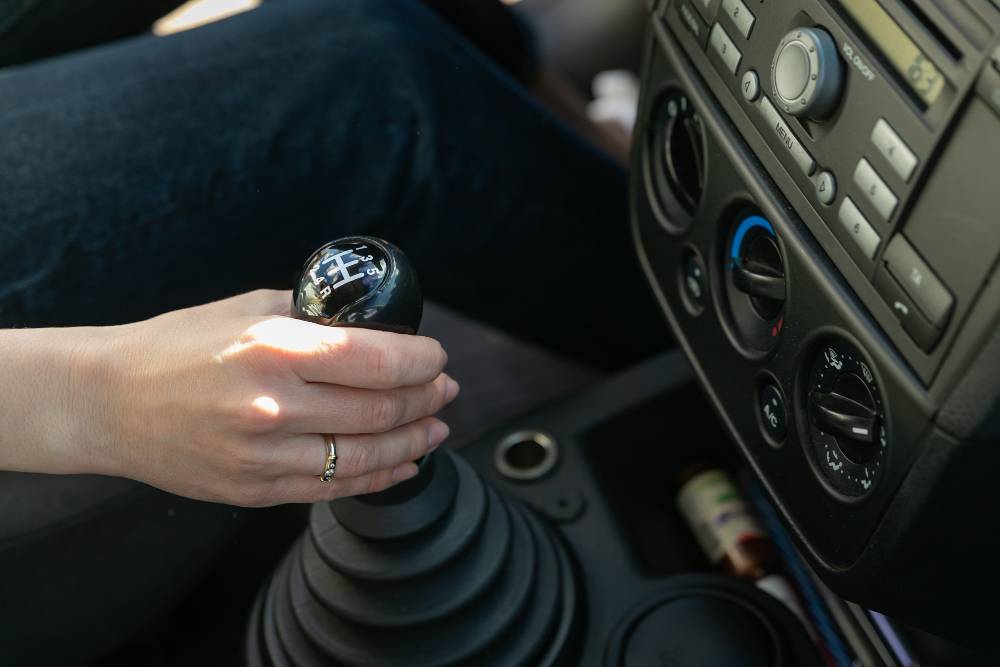Menu

Most vehicles on the road are powered by internal combustion engines (ICE), and the vast majority of these vehicles come equipped with automatic transmissions. However, a small percentage of ICE vehicles – about one in 40 or 50 – still feature manual transmissions.
For many, manual transmissions are synonymous with a more engaging driving experience and cost-effectiveness in terms of upfront cost and repairs. Despite their benefits, most people know very little about how manual transmissions work.
In this brief article brought to you by Wrights Car Care, we look into the mechanics of manual transmissions and why they offer such a unique driving experience. If your car needs a checkup, then consider a uniformed and trained mechanic. Call Wrights Car Care to schedule an appointment or arrange urgent assistance today.
A manual transmission, also known as a stick shift, is a type of transmission where the driver is responsible for manually changing the gears of the vehicle by using a gear stick and a clutch pedal. This stands in contrast to automatic transmissions, where the car shifts gears on its own based on speed and load.
There are 5 unique components to note:
It’s easier said than done, but we’ll try to break down how the manual transmission works in action. You’ll notice it involves a coordinated dance between the clutch pedal and the gear stick. Let’s get started.
With the engine off, you’ll press the clutch pedal all the way to the floor and shift the gear stick into neutral. Start the engine, then press the clutch pedal again and move the gear stick into first gear.
Slowly release the clutch pedal while simultaneously pressing the accelerator pedal. This gradually engages the clutch disc with the flywheel, transferring power from the engine to the wheels and propelling the vehicle forward.
To shift to a higher gear, release the accelerator, press the clutch pedal, and move the gear stick to the next gear. Release the clutch pedal smoothly while applying pressure to the accelerator. Each higher gear allows the car to go faster without overworking the engine.
When slowing down, you may need to downshift to a lower gear. This means pressing the clutch pedal, moving the gear stick to the lower gear, and smoothly releasing the clutch while adjusting the accelerator.
When you need to slow down or stop, you should press the brake pedal while simultaneously pressing the clutch pedal to disengage the engine from the transmission. If you’re coming to a complete stop, move the gear stick to neutral or keep the clutch pedal depressed until the vehicle is stationary.
While there is a learning curve to driving a manual, most drivers can become proficient with practice. Once mastered, the skills of driving a manual transmission can be very rewarding. Whether you are considering purchasing a vehicle with a manual transmission or having problems with an existing one, you are welcome to our auto repair shop.
We are happy to inspect your vehicle or arrange emergency auto repair service for as soon as possible. Call Wrights Car Care to get in touch with a member of our team today.
Wright's Car Care offers the most reliable import and domestic auto repair services. Read our blog posts to learn more about your vehicle.
Owning a car means familiarizing yourself with common car sounds and what they mean. Your car communicates with you in many ways, and weird noises often point to a problem…
READ MOREA full vehicle inspection is one of the best things you can do to keep your car safe, reliable, and performing at its best. Whether you’re preparing for a long trip, buying a used car, or keeping up with routine maintenance, a comprehensive inspection provides valuable insight into the overall condition of your vehicle. At Wright’s Car Care, we believe in educating our customers…
READ MOREWhen your dashboard suddenly lights up with a glowing check engine icon, it’s tempting to shrug it off, especially if…
READ MOREYour car’s braking system is the most important safety system when on the road. While anti-lock brakes are non-negotiable for…
READ MORE